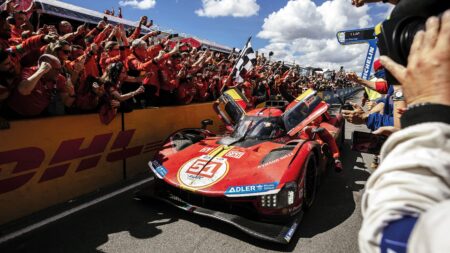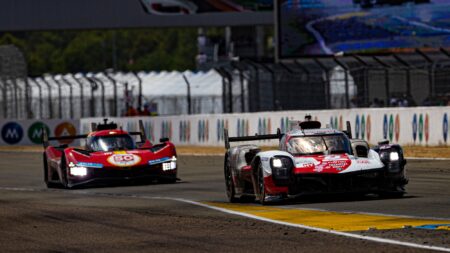But this is the first time I can think of where a top level racing car has been adapted for customer use for neither road nor racing purposes. Of course Ferrari has been building unhomologated track cars for years, but they have all been derived from street machines. Not this one: this is a full LMH prototype with Le Mans-winning heritage and while it has been modified for customer use, that is not to say it has in been watered down, to any extent. Quite the reverse in fact.
So what’s the same? The important bits – the tub, the engine, hybrid drive, suspension, basic aero concept, and so on – are common to both the works 499P and the customer 499 Modificata. As is the monoposto cockpit. But no longer having a rulebook with which to comply has conferred a number of benefits upon the car now being offered. For a start its powertrain is not restricted to a certain output, which is why the 3-litre V6 engine and front-mounted electric motor can provide up to 846bhp when using the new ‘push to pass’ power boost function also denied the race car, which is limited to ‘just’ 671bhp.

Cockpit design is unchanged from the one James Calado, Antonio Giovinazzi, Alessandro Pier Guidi sat in as they drove to Le Mans victory
Just as significant is the fact the electric motor can drive the front wheels from rest, whereas at Le Mans no torque is allowed to pass through the front axle until the car is doing 118mph, so no traction advantage is conferred. In the Modificata, you have all the traction, all the time.
Interestingly however Ferrari makes no claims about this car’s performance relative to the race car. With essentially unlimited traction and a further 175bhp, you’d expect this to be one customer car that easily outpaced its works sister. But were that the case, why is Ferrari not saying so? It would surely be a powerful sales tool.






